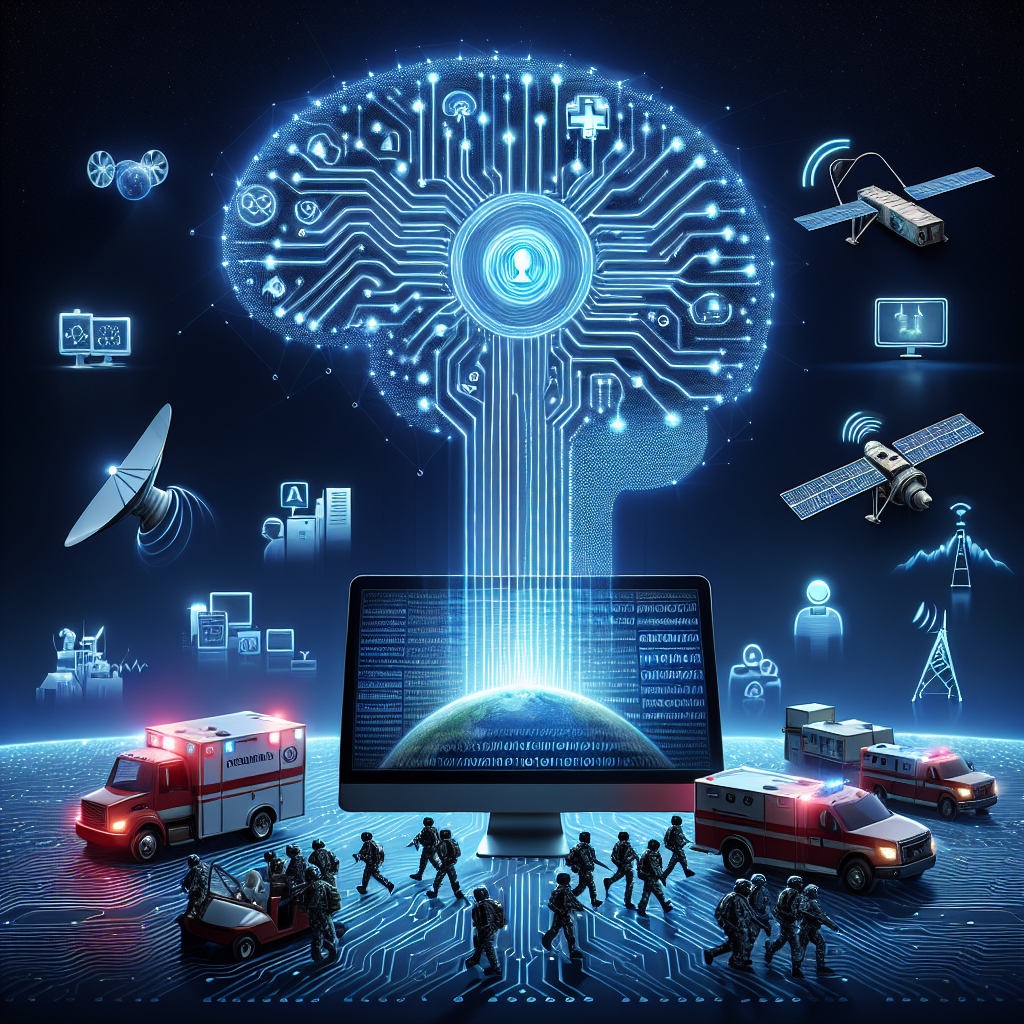The Role of AI and Machine Learning in Disaster Response Planning
In recent years, the frequency and severity of natural disasters have increased significantly, posing a growing challenge for disaster response organizations and governments around the world. To effectively respond to these disasters and mitigate their impact, it is essential to have robust disaster response planning in place. Artificial intelligence (AI) and machine learning are increasingly being used to enhance disaster response planning and improve the efficiency and effectiveness of disaster response operations.
AI and machine learning technologies have the potential to revolutionize disaster response planning by providing valuable insights and predictions that can help organizations better prepare for and respond to disasters. These technologies can analyze vast amounts of data, identify patterns and trends, and make real-time decisions to help optimize disaster response efforts. From predicting the impact of natural disasters to coordinating rescue operations and allocating resources, AI and machine learning have a wide range of applications in disaster response planning.
One of the key ways in which AI and machine learning are being used in disaster response planning is through predictive modeling. By analyzing historical data on past disasters, these technologies can predict the likelihood of future disasters and their potential impact on communities. This information can help organizations better prepare for disasters, allocate resources more effectively, and develop response plans that are tailored to specific scenarios.
For example, AI-powered predictive modeling can help predict the path of a hurricane or the likelihood of an earthquake in a specific region. This information can be used to evacuate at-risk populations, pre-position resources in strategic locations, and coordinate response efforts more efficiently. By anticipating the impact of disasters before they occur, organizations can reduce the overall damage and save lives.
In addition to predictive modeling, AI and machine learning are also being used to improve communication and coordination during disaster response operations. These technologies can analyze real-time data from various sources, such as social media, news reports, and sensor networks, to provide up-to-date information on the situation on the ground. This information can help organizations coordinate response efforts, communicate with affected populations, and make informed decisions in real-time.
For example, AI-powered chatbots can be used to provide real-time updates to residents during a disaster, answer frequently asked questions, and provide information on evacuation routes and emergency shelters. These chatbots can help reduce the burden on human responders, who can focus on more critical tasks, such as search and rescue operations.
Furthermore, AI and machine learning can also be used to optimize the allocation of resources during disaster response operations. By analyzing data on the availability of resources, such as food, water, medical supplies, and personnel, these technologies can help organizations allocate resources more efficiently and effectively. This can help ensure that resources are distributed to where they are needed most and minimize waste and duplication of efforts.
For example, AI-powered algorithms can analyze data on the location of affected populations, the severity of the disaster, and the availability of resources to determine the optimal distribution of resources. This can help organizations prioritize their response efforts and ensure that resources are allocated in a timely and effective manner.
Overall, AI and machine learning have the potential to transform disaster response planning by providing valuable insights, predictions, and decision-making tools that can help organizations better prepare for and respond to disasters. By harnessing the power of these technologies, organizations can improve the efficiency and effectiveness of their disaster response efforts and ultimately save lives.
FAQs
1. What is the role of AI and machine learning in disaster response planning?
AI and machine learning technologies are increasingly being used to enhance disaster response planning by providing valuable insights and predictions that can help organizations better prepare for and respond to disasters. These technologies can analyze vast amounts of data, identify patterns and trends, and make real-time decisions to help optimize disaster response efforts.
2. How can AI and machine learning help predict natural disasters?
AI-powered predictive modeling can analyze historical data on past disasters to predict the likelihood of future disasters and their potential impact on communities. This information can help organizations better prepare for disasters, allocate resources more effectively, and develop response plans that are tailored to specific scenarios.
3. How can AI and machine learning improve communication and coordination during disaster response operations?
AI and machine learning technologies can analyze real-time data from various sources, such as social media, news reports, and sensor networks, to provide up-to-date information on the situation on the ground. This information can help organizations coordinate response efforts, communicate with affected populations, and make informed decisions in real-time.
4. How can AI and machine learning optimize the allocation of resources during disaster response operations?
By analyzing data on the availability of resources, such as food, water, medical supplies, and personnel, AI and machine learning technologies can help organizations allocate resources more efficiently and effectively. This can help ensure that resources are distributed to where they are needed most and minimize waste and duplication of efforts.

